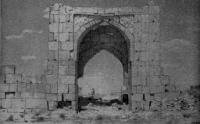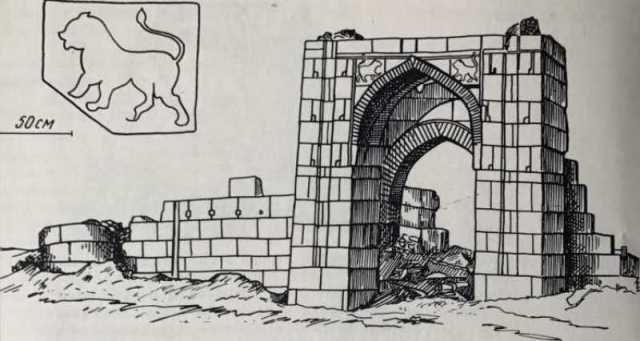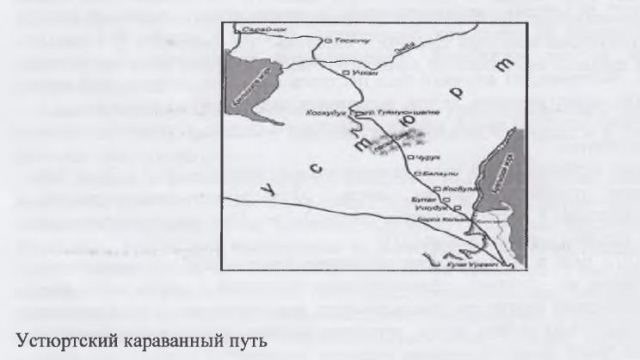Вы здесь
Beleuli caravanserai.

Event tourism in Karakalpakstan.
“Historically, in this part of Asia, the era of Arabian trade and the dominion of the Genghisids is especially noteworthy, in which deep wells were dug in waterless steps, covered with stone inside, stone buildings were built (probably, caravanserais are still visible), paths were laid, convenient for the movement of trade, so that, according to the historian of the XIV century, travelers from Khiva to Crimea could not take any supplies with them, because everything they needed was in the caravanserais."
M.I. Ivanin.
Great Silk Road and Karakalpakstan.
The Beleuli caravanserai is located on a natural hill 193.5 meters above sea level, in the southern part of the Ustyurt plateau, 22.9 kilometers northeast of the Beineu-Kungrad highway and railway, 78.3 kilometers to the south- east of the Karakalpakstan railway station and 66.7 kilometers northwest of the Zhaslyk railway station in the Kungrad region of the Republic of Karakalpakstan.
Bileuli caravanserai is an architectural monument of the XIV century. In 1982 it was investigated by an expedition of the Kazakh Committee for the Design and Restoration of Monuments (headed by A. Tokhtabaev).
It arose in the Middle Ages on the Old Nagai road from the city of Saraishyk to Khiva through Ustyurt between the Aral and Caspian seas. Two columns with a height of about 8 meters and a gate have been preserved.
The upper part of the gate in the form of an arch is lined with red brick, the doors 7.66 meters high - with two images-bas-reliefs of lions. The building of the caravanserai occupies an area of 35 x 29 meters. The corners of the building are reinforced with towers with a diameter of 3 meters.
As the photographs show, until 1972 there was a portal of the building, in the tympans of which lions were depicted, made in majolica tiles in the form of flat reliefs. Lions stand on their hind legs, and the right front one is raised, bushy tails are thrown over their backs.
In the depths of the portal there was a pointed arch. The vault of the portal niche was decorated with majolica slabs painted in the form of straight and intertwined lines in white, turquoise and ultramarine colors. The vaults of the portal were decorated with tiles with geometric patterns, such images are called "Babylon".
Bileuli caravanserai consisted of a two-storey building of 14 rooms, seven rooms on each floor, with a heating system. There is a well in the center of the courtyard of the caravanserai.
Memories of Alexander Vladimirovich Vinogradov from the book "Millennia Buried by the Desert". Moscow. Education. 1966.
“After spending the night on the road, we arrived at Beleuli early in the morning. The gates of the caravanserai were open. In the opening of the pointed arch of the majestic portal, a piece of the sky was blue. A large lake, outlandish on Ustyurt, this rocky, lifeless desert, began next to the building.
On its surface covered with light ripples, not far from the shore, a large flock of ducks splashed. The sun had just risen, and the long shadows of small birds formed a whimsical picture on the water. The silence was not broken by the shouts of the drivers or the roar of the camels.
The blue haze of the hearth did not curl. Five hundred years have passed since the day when the Beleuli caravanserai received the caravan weary from the long march for the last time. But even now, dilapidated, it looks very impressive.
The high portal with relief images of lions on the façade is quite well preserved. It is composed of large stone blocks, hewn and tightly fitted to each other. Huge quarries-quarries half a kilometer from the caravanserai show where this stone was taken.
True, the premises that once hospitably welcomed merchants and travelers are now in ruins. In a large rectangular square, they adjoin on both sides the portal, where the main entrance to the caravanserai was. The large courtyard inside the square is covered with fragments of stone and brick and overgrown with thorny grass.
The caravanserai was built on the elevated desert plateau Ustyurt, a few hundred kilometers from the outskirts of Khorezm. But archaeologists who visited the ruins in 1946 immediately noticed here - in the nature of architecture and external decoration, in construction techniques - the hand of skilled Khorezm masters.
If you drive along the well-worn road to the north-west of Beleuli, you will see the ruins of another small building - Churuk, then there will be Kos-Kuduk, Uchukan, Taskichu ... To the southeast - the ruins of Kos-Bulak, Bulak, Uch-Kuduk.
Many of these ruins still have wells - one, two, three and more, with slightly brackish, but drinkable water. These ruins are not as impressive as Beleuli - usually a flat clay mound with small fragments of burnt bricks and ceramics.
This is also a caravanserai. As the exploration excavations have shown, they were built in the XI - XII centuries. If you move to the north-west along the chain of caravanserais (and they are located at a distance of 20 - 30 kilometers from each other - the day's passage of the caravan), then you can get to Embu, the Urals, then to the Lower Volga region.
If you go to the southeast, then, going down from the Ustyurt cliff-cliff, marked by a chain of Khorezm guard fortresses and signal towers, the road through many crossings will lead to Urgench - the capital of medieval Khorezm.
Geographic coordinates of the Beleuli caravanserai: N44 ° 30'14.00 "E57 ° 06'56.00"




Authority:
Rizo Ahmad.
http://rizoakhmad.blogspot.com/2017/07/blog-post_212.html







